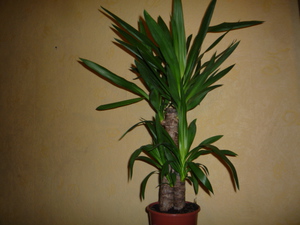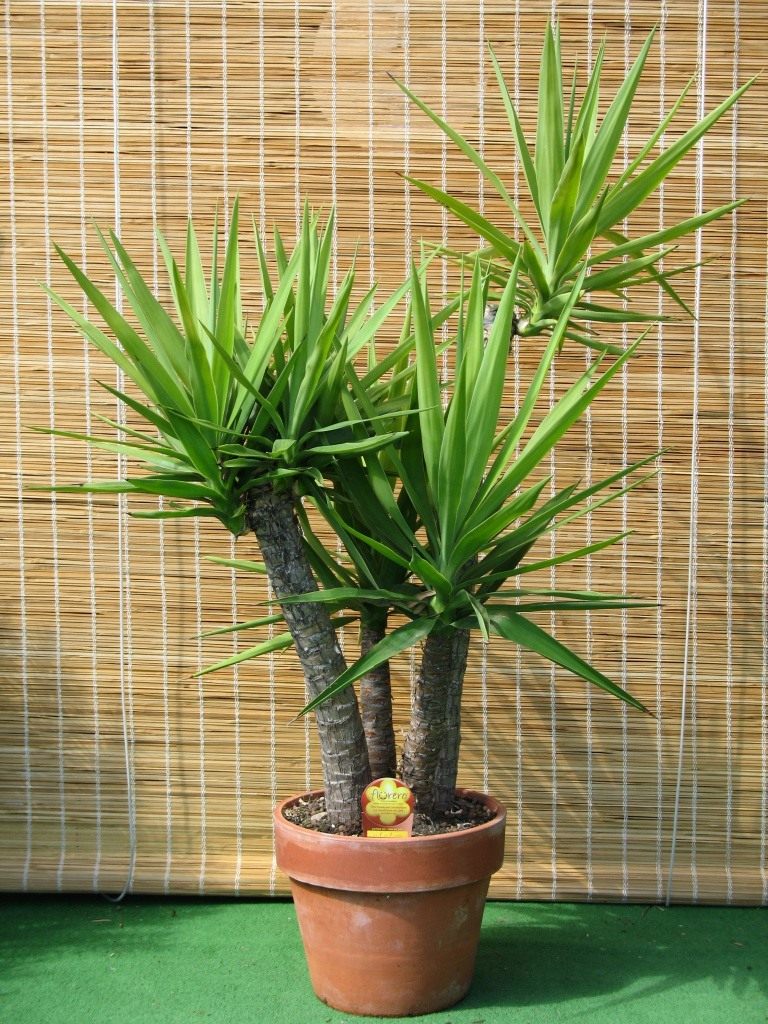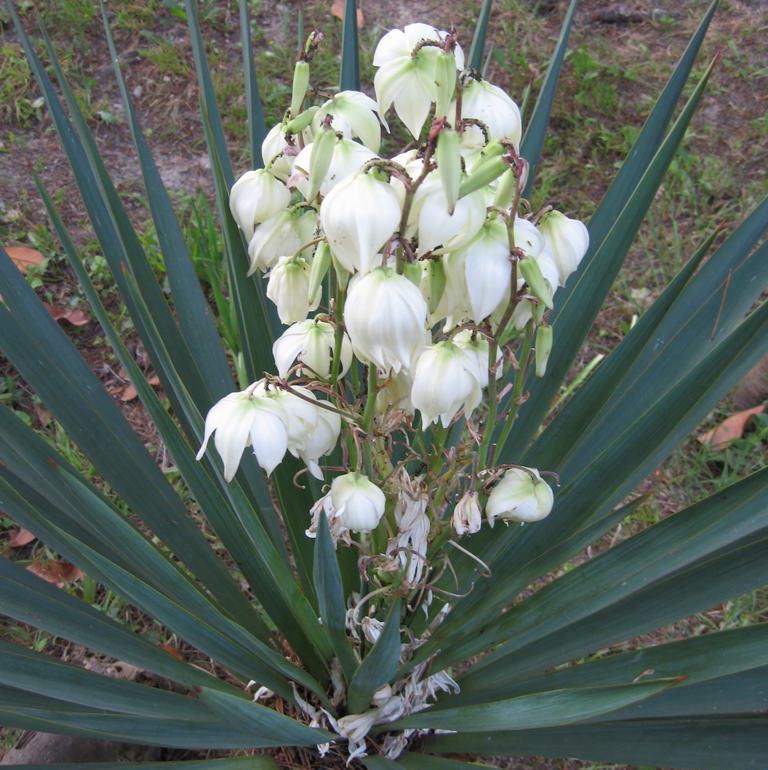A perennial tree plant Yucca from the genus Agavaceae (Agavaceae) resembles a miniature palm tree. However, the genus has up to fifty species of perennial plants, and among them there are real giants: for example, elephant yucca reaches ten meters in height. In the practice of world gardening - growing a plant both in the open air and as an indoor decoration. At home, the crown of the plant is often pruned to make the yucca fluffier.
In Eurasian latitudes, the most common are the following varieties:
- garden,
- elephant,
- filamentous,
- aloe leaf.
Description
Yucca belongs to the agave subfamily, which are part of the asparagus family. Plant has a straight woody stemalthough in some species it is branched. Pointed leaves of the linear-lanceolate type are formed either on the top of the trunk or at the ends of the branches. The flowers look like panicles of several white bells. The fruits are of two types:
- fleshy berry,
- dry box.
Most often, yucca fruits are represented by capsules, but it is almost impossible to get them at home: the plant is pollinated by insects endemic to South American latitudes.
In some cases, the aerial part of the stem may be absent altogether: the plant looks like a bunch of large xiphoid leaves in a pot.
The natural range of yucca covers vast areas of the Pan American land mass. As a cultivated plant, it is grown in warm European countries, mainly in the south.
In addition to elephant and aloe-leaf, varieties of cultural yucca are Yucca whipplei, which stands out among its congeners with a spherical prickly crown of green leaves with a grayish tint and short-stemmed yucca gray (Yucca glauca) with long leaves drooping downwards. From a decorative point of view, a variety of southern yucca (Yucca australis), characterized by a branched trunk, is also interesting. Suitable for outdoor cultivation garden yucca filamentous (Yucca filamentosa), whose dark green leaves, combined with lateral suckers, form a neat rosette.
Bloom
Yucca is not an often flowering plant. In addition, even with fully balanced care and maintenance, flowering will not occur earlier than 5 years after planting in the summer. A well-timed rest period in the cold season gives an incentive to lay the flower buds of the trunk when it reaches adulthood.
Care
 Yucca, like almost all of its relatives, has the highest requirements for insolation, that is, the duration of exposure to the sun. Based on this, the flower is transferred for the summer time closer to the open air: for example, to the loggia or terrace... Despite this, direct rays during peak solar activity can damage the deciduous mass, causing burns. When the plant is kept in conditions of both a lack and an excess of natural light, a lush deciduous crown does not form and the yucca cannot be made more fluffy and beautiful.
Yucca, like almost all of its relatives, has the highest requirements for insolation, that is, the duration of exposure to the sun. Based on this, the flower is transferred for the summer time closer to the open air: for example, to the loggia or terrace... Despite this, direct rays during peak solar activity can damage the deciduous mass, causing burns. When the plant is kept in conditions of both a lack and an excess of natural light, a lush deciduous crown does not form and the yucca cannot be made more fluffy and beautiful.
Sharp changes in temperature should not be allowed: the temperature optima of the content of yucca are in the range of 20-25 ° С in summer and not lower than 10 ° С in winter.
Yucca needs abundant infrequent watering the whole spring-summer period, however, the pot tray must be kept clean and free of stagnant water.Under normal conditions, a single watering weekly is enough for an adult plant. The winter watering regime is determined by the air temperature: the cooler, the more moderate. It is enough to wipe the leaves with a soft, slightly damp cloth to remove dust from the stomata. Usually, only those plants that are located too close to heating devices during the winter season are sprayed with a fine spray gun.
Growing yucca and caring for it at home:https://flowers.desigusxpro.com/en/sadovye-cvety/cvety-yukka-vyraschivanie-v-domashnih-usloviyah-foto.html
Pruning
 Since the plant does not bloom often, there is no choice but to cut the yucca to make it fluffier. During pruning, shoot buds are used to form additional tops. In this case, the plant must overcome 60-70 cm of growth, and the diameter of the stem must be at least 5 cm. The pruning process is recommended to be carried out in early spring, after several days of abundant watering.
Since the plant does not bloom often, there is no choice but to cut the yucca to make it fluffier. During pruning, shoot buds are used to form additional tops. In this case, the plant must overcome 60-70 cm of growth, and the diameter of the stem must be at least 5 cm. The pruning process is recommended to be carried out in early spring, after several days of abundant watering.
To carry out trimming you will need:
- a sharp knife with a blade disinfected with alcohol,
- finely crushed charcoal,
- garden var or natural wax.
The cut location is determined at a height of 7-8 cm from the lower leaves. The leaves are intercepted by hand and the stem is cut with one movement. Breaks must not be allowed, as this can lead to decay of the trunk. Immediately after cutting, the cut is sprinkled with charcoal. After a couple of hours, the charcoal can be cleaned off and the cut can be sealed to prevent rotting with pitch or wax.
A few weeks after pruning, the top of the stem will give two to five apical buds. With a trunk thickness of less than 5 cm, 2 buds are left, cutting off the rest. If the trunk of the plant is sufficiently developed and quite strong, which is determined by a thickness of 7-8 cm, then you can leave 4 kidneyswhich will form new tops with leaves.
To get a really sprawling yucca, the most powerful of the cut tops is rooted in the same pot as the plant to be cut. The preliminary preparation of the green top is to let it wither slightly in a dark, cool place. This method, like no other, increases the likelihood of making the yucca fluffier.


